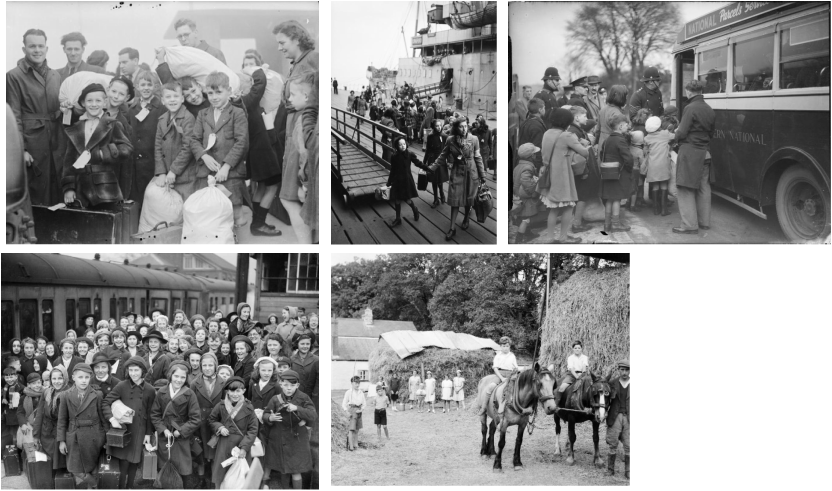The concept of conflict resolution can be explored with children at the end of the WW2 topic. Support children to think about all the people that WW2 affected. (If possible, visitors with first-hand experiences could be invited into school to talk to the children about this.) How did it also affect places and environments? Is it still having an impact? Discuss the fact that it was a 'world' war; how did it affect other countries? Do some research and allow the children time to discuss their ideas in relation to these questions.
Ask them to consider whether anything positive came out of World War Two. This could be a class debate providing an opportunity to develop speaking and listening skills and tolerance and respect for other people’s opinions.
Explore how and why WW2 ended. Ask the children to work in groups to come up with three or four ways that war could be prevented. Explain that after the war people did the same thing - discuss with children the setting up of the United Nations and its role in peacekeeping. Show them the emblem. Is the world peaceful nowadays? Do the children know of any on-going conflicts? What impact are these conflicts having, both locally and globally? Allow children time to research on-going conflicts and find out about the causes and potential resolutions for these.
Learning about evacuation during WW2 would also be a good way to explore the impact that conflicts can have on people and places, which is important for understanding the concept of conflict resolution. The British Red Cross website has some good ideas for activities linking learning about evacuation during WW2 and refugees from more recent conflicts. Children could compare and contrast the stories of child refugees from current/ more recent conflicts and those of children during WW2. Encourage children to look for similarities and differences.
BBC Seeking Refuge clips - short animations telling the stories of children who came to the UK as refugees from Zimbabwe, Iran, Eritrea and Afghanistan.
Refugee Council, Stories of child refugees - children from Afghanistan and Nigeria tell their stories.
BBC Primary History, Evacuation - photographs, audio recordings and letters of British evacuees during WW2.
Explore how and why WW2 ended. Ask the children to work in groups to come up with three or four ways that war could be prevented. Explain that after the war people did the same thing - discuss with children the setting up of the United Nations and its role in peacekeeping. Show them the emblem. Is the world peaceful nowadays? Do the children know of any on-going conflicts? What impact are these conflicts having, both locally and globally? Allow children time to research on-going conflicts and find out about the causes and potential resolutions for these.
Learning about evacuation during WW2 would also be a good way to explore the impact that conflicts can have on people and places, which is important for understanding the concept of conflict resolution. The British Red Cross website has some good ideas for activities linking learning about evacuation during WW2 and refugees from more recent conflicts. Children could compare and contrast the stories of child refugees from current/ more recent conflicts and those of children during WW2. Encourage children to look for similarities and differences.
BBC Seeking Refuge clips - short animations telling the stories of children who came to the UK as refugees from Zimbabwe, Iran, Eritrea and Afghanistan.
Refugee Council, Stories of child refugees - children from Afghanistan and Nigeria tell their stories.
BBC Primary History, Evacuation - photographs, audio recordings and letters of British evacuees during WW2.
Use pictures such as those below to explore the ideas of evacuation and refugees.
1. © IWM (D 27612): Dutch children excited about leaving Warmsworth Camp, Near Doncaster, England to stay as guests with British families.
2. © IWM (D 24064): A Dutch school teacher leads a group of refugee children as they arrive in Essex in 1945.
3.© IWM (D 2590): Evacuees from Bristol boarding a bus.
4.© IWM (D 2587): Evacuees from Bristol as they arrive in Devon in 1940.
5. © IWM (D 974): Children evacuated from London to Wales in 1940 get involved in life on the farm.
Each of the above images can be found on the Imperial War Museum's collection website.
2. © IWM (D 24064): A Dutch school teacher leads a group of refugee children as they arrive in Essex in 1945.
3.© IWM (D 2590): Evacuees from Bristol boarding a bus.
4.© IWM (D 2587): Evacuees from Bristol as they arrive in Devon in 1940.
5. © IWM (D 974): Children evacuated from London to Wales in 1940 get involved in life on the farm.
Each of the above images can be found on the Imperial War Museum's collection website.
6. © Crown copyright. IWM (OP-TELIC 03-010-32-205): Iraqi refugees fleeing Basra city, 2003.
7. ©2012 Brian Sokol/UNHCR: Sudanese refugees queue for food in a refugee camp, 2012.



